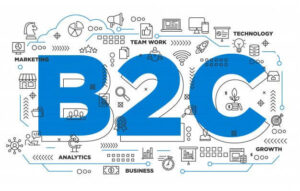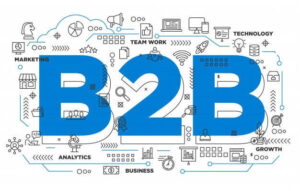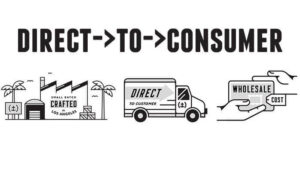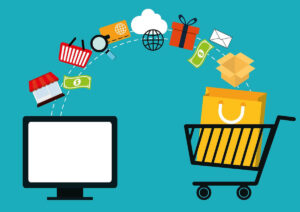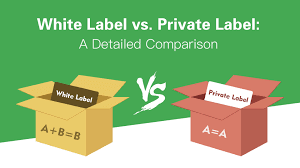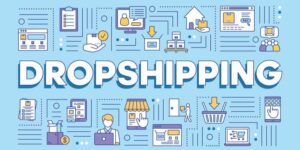The eCommerce industry has expanded rapidly, and today businesses can operate using several different models depending on their goals, products, and target customers. Understanding the types of eCommerce business models helps you choose the right strategy, improve profitability, and scale efficiently.
Below is a complete breakdown of the most common eCommerce business models, explained in simple terms with examples.
Contents
Types of eCommerce Business Models
The eCommerce industry is growing rapidly, offering businesses multiple ways to sell online. Choosing the right eCommerce business model is crucial to maximize sales, improve customer experience, and scale efficiently. Understanding each model helps you make informed decisions based on your products and target audience.
1. Business-to-Consumer (B2C)
The B2C model involves businesses selling products or services directly to individual consumers. It is the most common type of eCommerce, covering industries like fashion, electronics, and home goods. Customers enjoy the convenience of browsing online and receiving items at their doorstep.
B2C businesses focus on fast delivery, competitive pricing, and marketing to individual buyers. Popular platforms include Lazada, Shopee, and Zalora. This model is ideal for brands looking to build a direct relationship with consumers.
Business-to-Consumer (B2C)
Best for: Brands selling directly to individual consumers online.
Click Here2. Business-to-Business (B2B)
The B2B model refers to companies selling goods or services to other businesses. Orders are usually in bulk, with pricing structured through contracts, agreements, or negotiated rates. This model often involves longer sales cycles but larger transaction values.
B2B operations focus on building long-term partnerships and maintaining reliable supply chains. Examples include Alibaba, Ubuy, and industrial suppliers. It is perfect for businesses targeting wholesalers, retailers, or other corporate clients.
Business-to-Business (B2B)
Best for: Companies supplying products or services to other businesses.
Click Here3. Consumer-to-Consumer (C2C)
The C2C model allows individuals to sell directly to other individuals online. Platforms act as a marketplace where users can list products, negotiate, and complete transactions. This is popular for second-hand items or handmade goods.
C2C platforms rely on user trust and community engagement to function effectively. Well-known examples include Facebook Marketplace, Carousell, and eBay. It provides a low-cost way for individuals to start selling products.
Consumer-to-Consumer (C2C)
Best for: Individuals selling second-hand or handmade items directly to other consumers.
Click Here4. Consumer-to-Business (C2B)
In the C2B model, consumers sell products or services to businesses. Freelancers, influencers, and content creators often offer their skills or products to companies. The business benefits from outsourcing tasks without hiring full-time staff.
C2B focuses on empowering individuals to monetize their expertise. Platforms like Fiverr and Upwork support C2B transactions. This model works well for services, marketing, and creative industries.
Consumer-to-Business (C2B)
Best for: Freelancers, influencers, or individuals offering products or services to companies.
Click Here5. Direct-to-Consumer (D2C)
The D2C model allows brands to sell directly to their customers without intermediaries. Companies manufacture products and deliver them via their own websites, social media, or apps. This approach provides full control over the brand experience.
D2C focuses on customer engagement, pricing strategy, and building loyalty. Popular examples include Casetify and Oxwhite. It is ideal for companies looking to maximize profit margins and brand recognition.
Direct-to-Consumer (D2C)
Best for: Brands looking to sell directly to customers without intermediaries.
Click Here6. Subscription-Based eCommerce
The subscription-based model provides products or services on a recurring schedule. Customers pay weekly, monthly, or yearly for delivery or access. Examples include meal kits, beauty boxes, and SaaS software.
Subscriptions ensure predictable revenue and long-term customer retention. Netflix, HelloFresh, and Birchbox are leading examples. This model works well for businesses with consumable or recurring products.
Subscription-Based eCommerce
Best for: Businesses offering recurring products or services, like meal kits or software.
Click Here7. Marketplace Model
A marketplace connects multiple sellers with buyers on a single platform. The platform does not own inventory but earns through commissions or fees. It offers customers variety and choice while scaling quickly.
Marketplaces focus on user experience, trust, and seller management. Popular examples include Shopee, Amazon, and Etsy. This model is suitable for businesses looking to reach a wide audience without holding stock.
Marketplace Model
Best for: Platforms connecting multiple sellers with buyers without holding inventory.
Click Here8. White Label & Private Label eCommerce
White label products are generic items rebranded by sellers, while private label products are manufactured exclusively for a brand. Both allow businesses to sell products without producing them themselves.
This model focuses on unique branding and market differentiation. It is widely used in beauty, apparel, and supplement industries. Brands can sell customized products without large-scale manufacturing.
White Label & Private Label eCommerce
Best for: Businesses wanting to sell branded products without manufacturing them.
Click Here9. Dropshipping
Dropshipping allows sellers to list products without storing inventory. When a customer places an order, the supplier ships directly to the buyer. This minimizes risk and upfront investment.
Dropshipping relies on reliable suppliers and efficient logistics. It is popular for small eCommerce stores using Shopify or WooCommerce. Entrepreneurs can start selling with low capital while testing products and markets.
Dropshipping
Best for: Entrepreneurs starting online stores with minimal upfront investment and no inventory.
Click HereTips for Choosing the Right eCommerce Business Model
Identify Your Target Audience – Understand who your customers are and how they prefer to shop. B2C and D2C models focus on individual consumers, while B2B targets companies.
Assess Your Products or Services – Consider if your products are physical, digital, perishable, or recurring. Subscription or dropshipping models work best for consumables and low-risk inventory.
Evaluate Your Budget and Resources – Some models like private label, D2C, or automated fulfillment require higher upfront investment. Dropshipping or C2C may be better for low-budget startups.
Consider Scalability – Choose a model that can grow with your business. Marketplaces and fulfillment-based models are easier to scale without major capital expenditure.
Analyze Your Desired Customer Experience – Decide how much control you want over branding, pricing, and delivery. D2C offers full control, whereas marketplaces rely on shared platforms.
How to Ship Items with EasyParcel
- Step 1
- Step 2
- Step 3

- Place the items in the small box.
- Wrap with bubble wrap so it doesn’t get scratched.
- If it’s a branded item, keep the original box inside.
- Seal the package with strong tape and fragile adhesive.
 Check the weight with a scale
Check the weight with a scale- Measure the length, width and height

- Log in to your EasyParcel account.
- Enter the pickup and delivery address.
- Enter the weight and size of the package.
- Choose your courier service (J&T, DHL, Pos Laju).
- Add insurance if the item is expensive.
Understanding the different types of eCommerce business models helps businesses choose the right approach based on their goals, budget, and audience. Whether you sell your own products, offer services, run a marketplace, or use dropshipping, each model has its own strengths and opportunities.
With EasyParcel, you can make delivery simple, affordable, and efficient — helping your business grow smoothly. EasyParcel welcomes you with a FREE RM10 credit for your first shipment. Sign up today and start shipping smarter with EasyParcel!
FAQ: Types of eCommerce Business Models
1. What is an eCommerce business model?
An eCommerce business model defines how a company sells products or services online, who their target customers are, and how revenue is generated.
2. Which eCommerce model is best for beginners?
Dropshipping or C2C models are ideal for beginners because they require low upfront investment and minimal inventory management.
3. What’s the difference between B2B and B2C?
B2B sells products or services to other businesses in bulk, often with contracts, while B2C sells directly to individual consumers for personal use.
4. Can one business use multiple eCommerce models?
Yes. Many businesses combine models like D2C with subscription services or operate a marketplace alongside their own store to reach more customers.
 Singapore
Singapore Thailand
Thailand Indonesia
Indonesia
